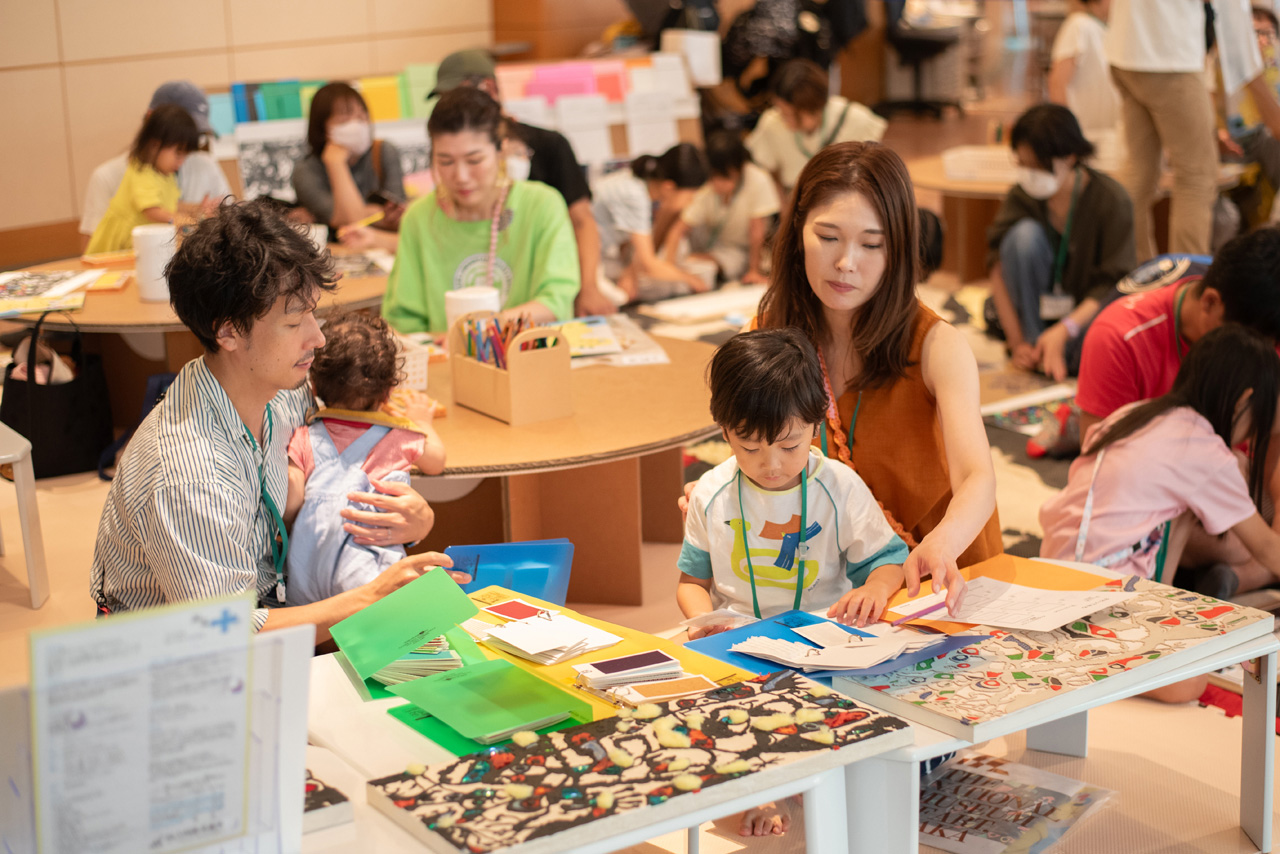Reports
April 14, 2025
2024 Event Report: Art Tour Series Special & NMAO Family☆Day!
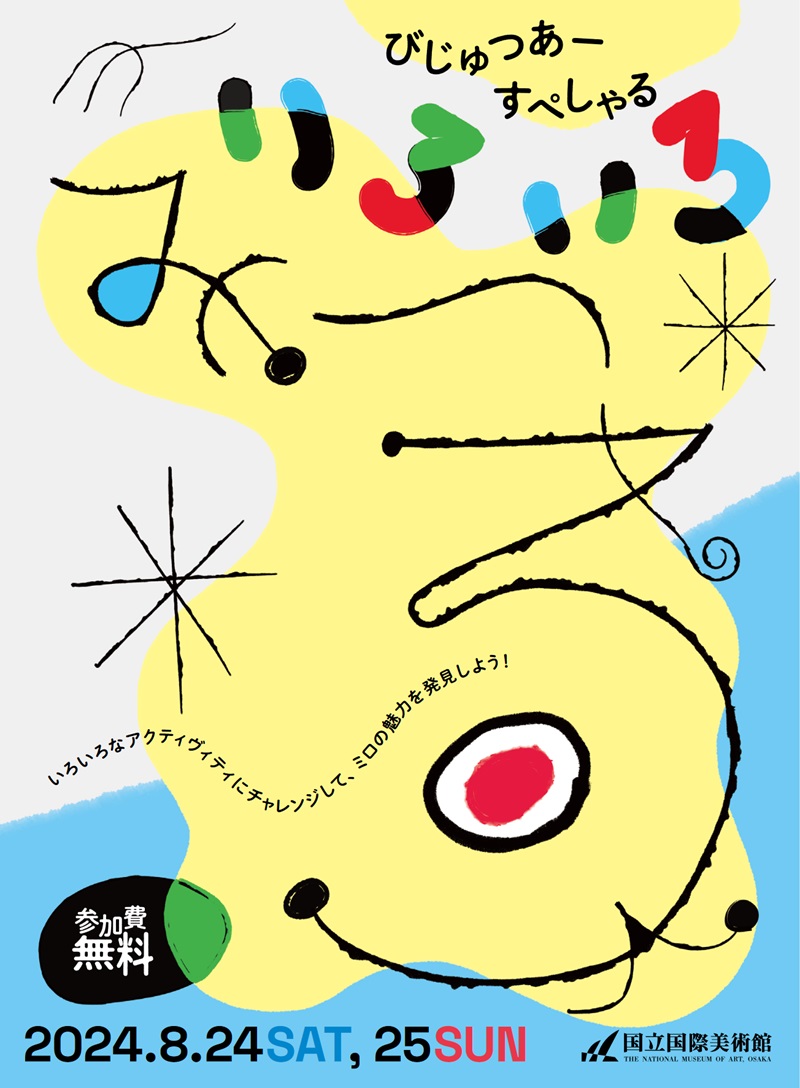 EndedFree admission for children under 18
EndedFree admission for children under 18 
Art Tour Series Special
The National Museum of Art, Osaka
Dates August 24, August 25, 2024
- Paintings
- Sculptures and 3D artworks
- Workshop
Index
The National Museum of Art, Osaka, which showcases modern art from Japan and around the world, held a special program called Art Tour Series Special focused on exploring Joan Miró’s Innocent Laughter (1969), one of the museum’s signature pieces, from various perspectives. The two-day event on Saturday and Sunday, August 24th and 25th, attracted 183 visitors, mainly families with elementary school children or younger.
Sunday, August 25th was NMAO Family☆Day! and many families could be seen visiting with strollers. Families chatted as they pointed out artworks in the special exhibition “Yoichi Umetsu: Crystal Palace” or sat in chairs to enjoy pieces from the collection, each at their own pace.
Discovering the Artwork
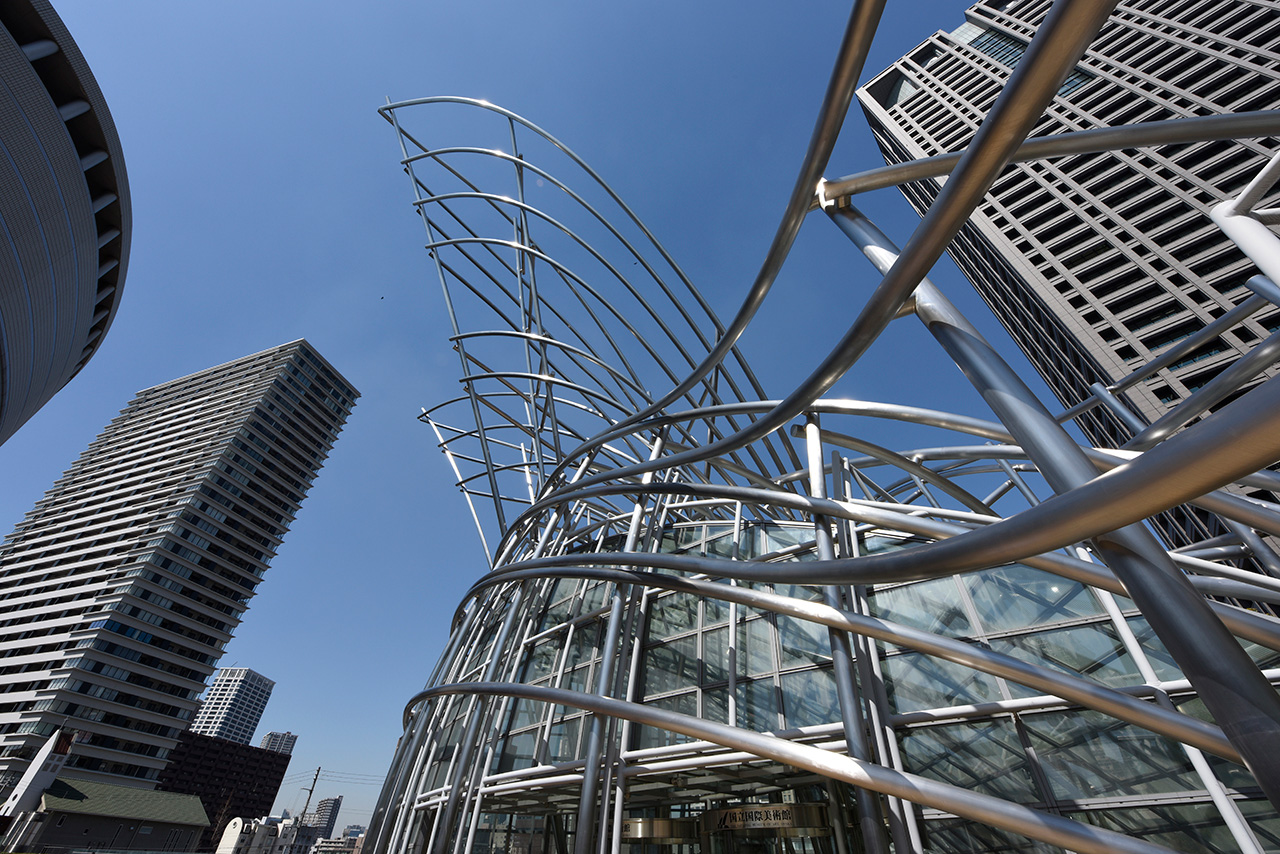
The National Museum of Art, Osaka, is located in Nakanoshima, a cultural center in Osaka. This museum is unique because it’s built completely underground—a rare design anywhere in the world. Visitors enter through a doorway surrounded by bamboo-inspired sculptures, then take an escalator down into the building.
The featured artwork, Miró’s Innocent Laughter, hangs on the open wall between the first and second basement floor collection galleries. The piece spans 12 meters and features bold black lines with vibrant colors like red and yellow. It’s composed of 640 ceramic tiles carefully arranged together.
For this program, a special area was set up on the first basement floor where visitors could view the artwork at eye level. Eight different activities were created to help everyone discover what makes this artwork special.
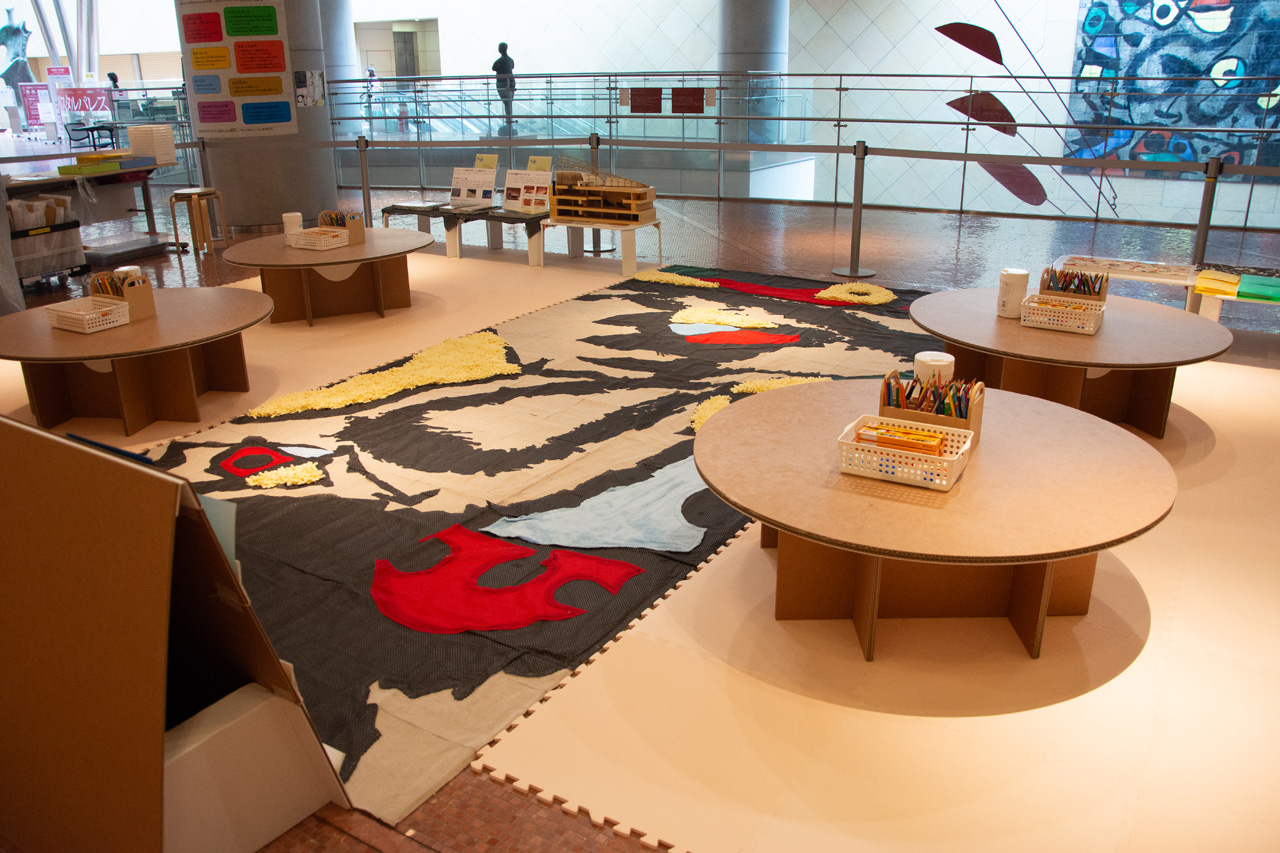
After checking in, visitors took off their shoes and entered the activity space. While there was no set order for trying the eight activities, the All About Colors activity was perfect for everyone—especially those seeing the artwork for the first time.
Participants received a black and white print of the artwork. Using crayons and colored pencils, they filled in the white spaces to match the colors of the original. While it might seem like simple coloring, the activity required careful observation of the abstract shapes to figure out which colors went where.
Everyone had their own approach—children colored from the middle outward, adults counted similar colored sections to work one color at a time, and families around each table developed their own unique strategies.
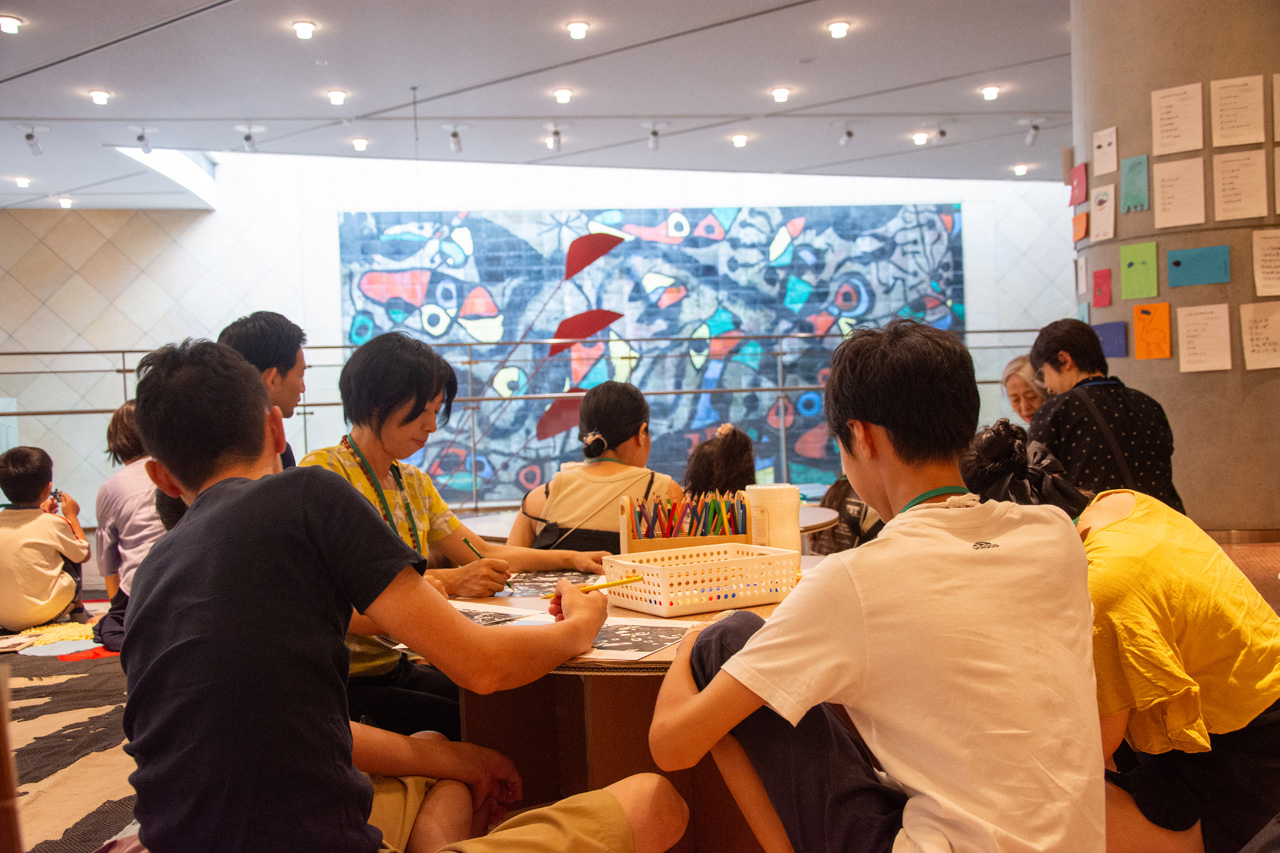
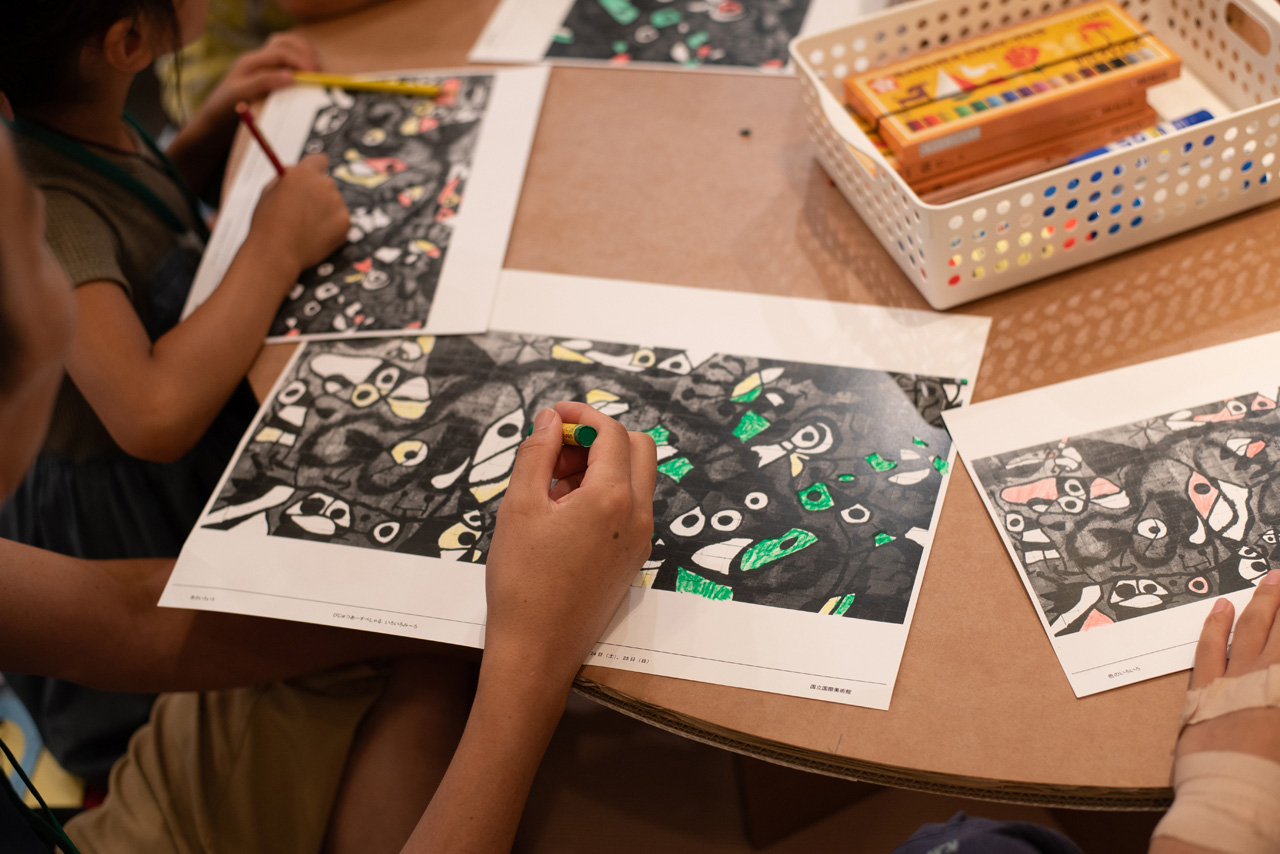
Though using the same colors, each person’s work looked unique depending on how hard they pressed and which art supplies they chose. By coloring the artwork themselves, visitors could better appreciate the artist’s skillful use of color.
Another popular activity, especially good for beginners, was the Miró Puzzle, which divided the artwork into 60 pieces. Participants turned the scattered pieces in different directions, holding them up to compare with the original as they worked to solve the puzzle.
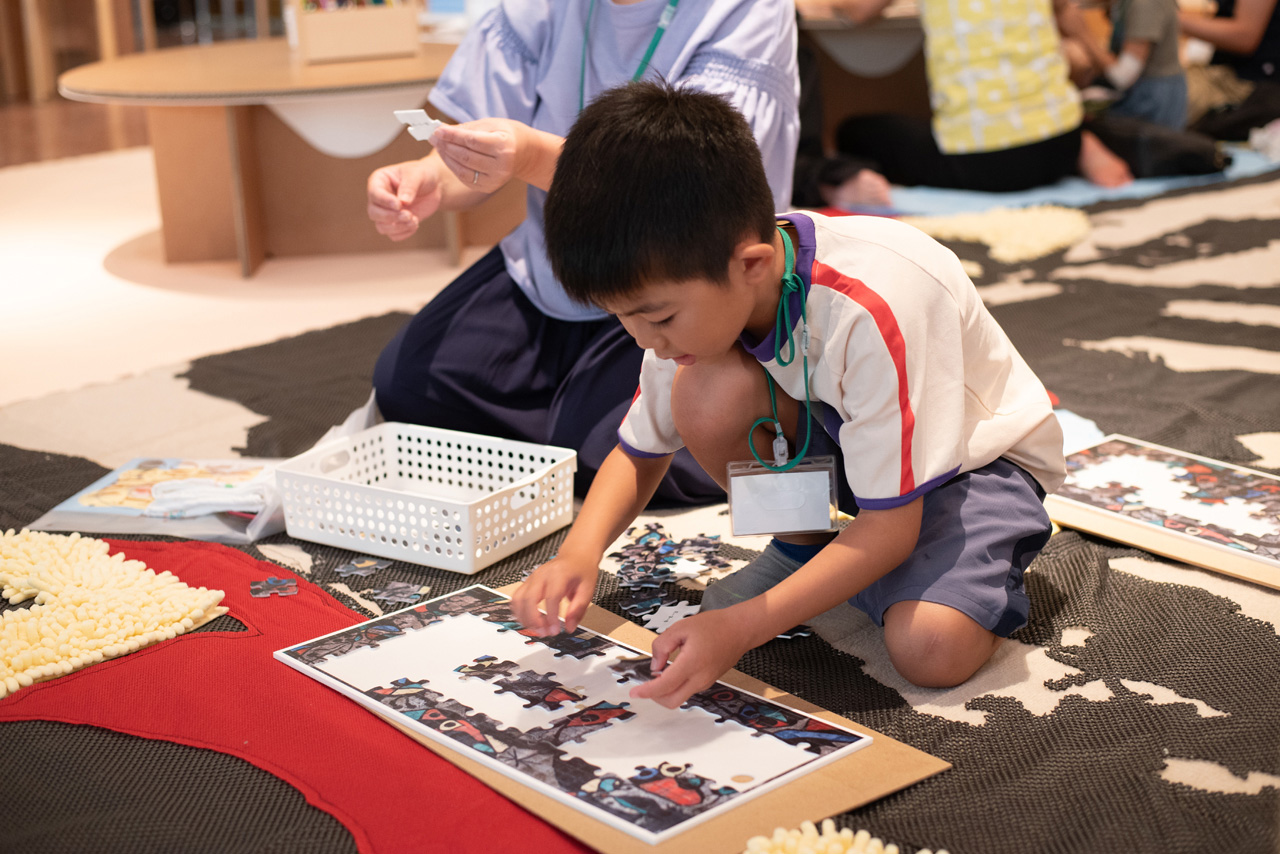
The original artwork itself was made by combining ceramic tiles, making it similar to a puzzle. In one corner of the activity area, visitors could see and touch a life-sized replica of one of these ceramic tiles.
Up close, even adults were quite surprised by how heavy the ceramic tiles were. Children joined in too, lifting and touching it to feel its weight and glossy surface. This hands-on experience was part of an activity called One of 640, representing one piece of the complete artwork.
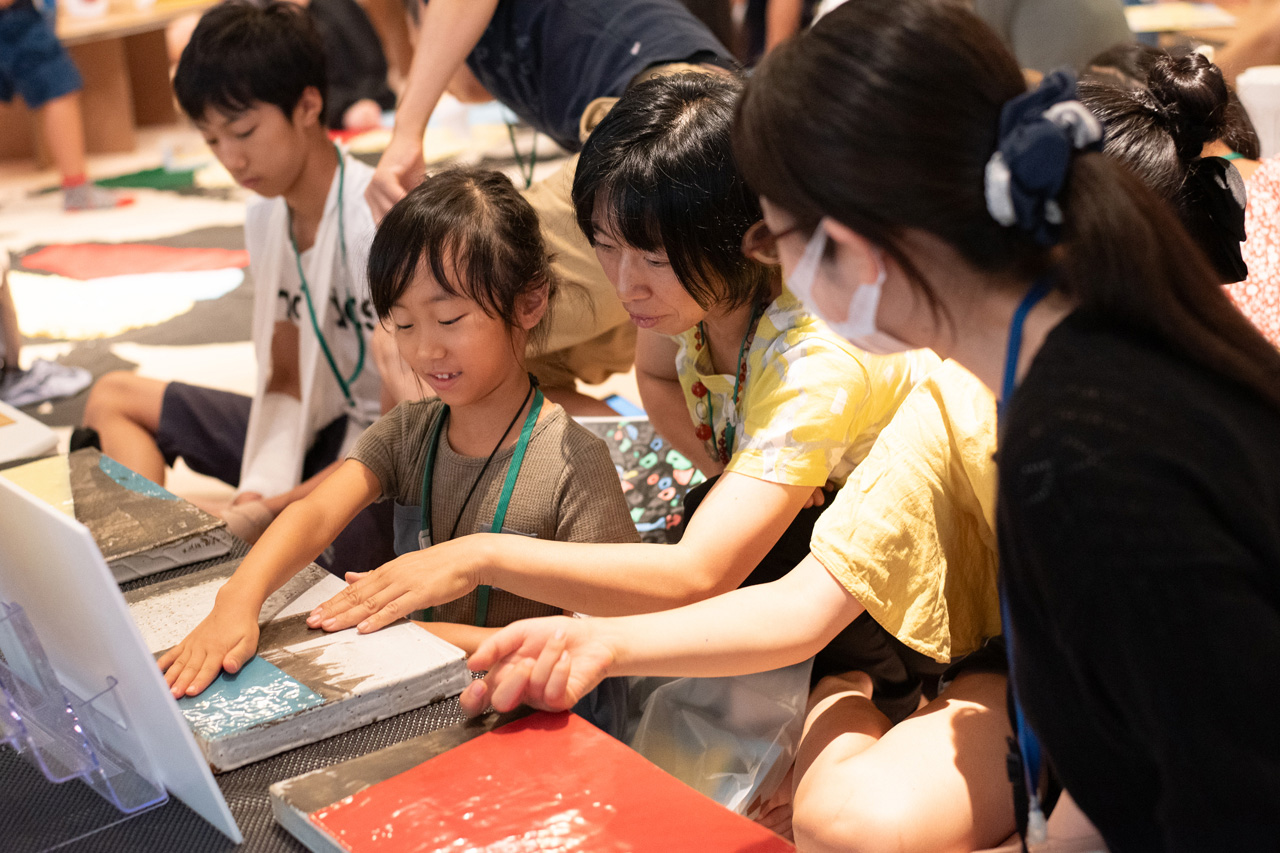
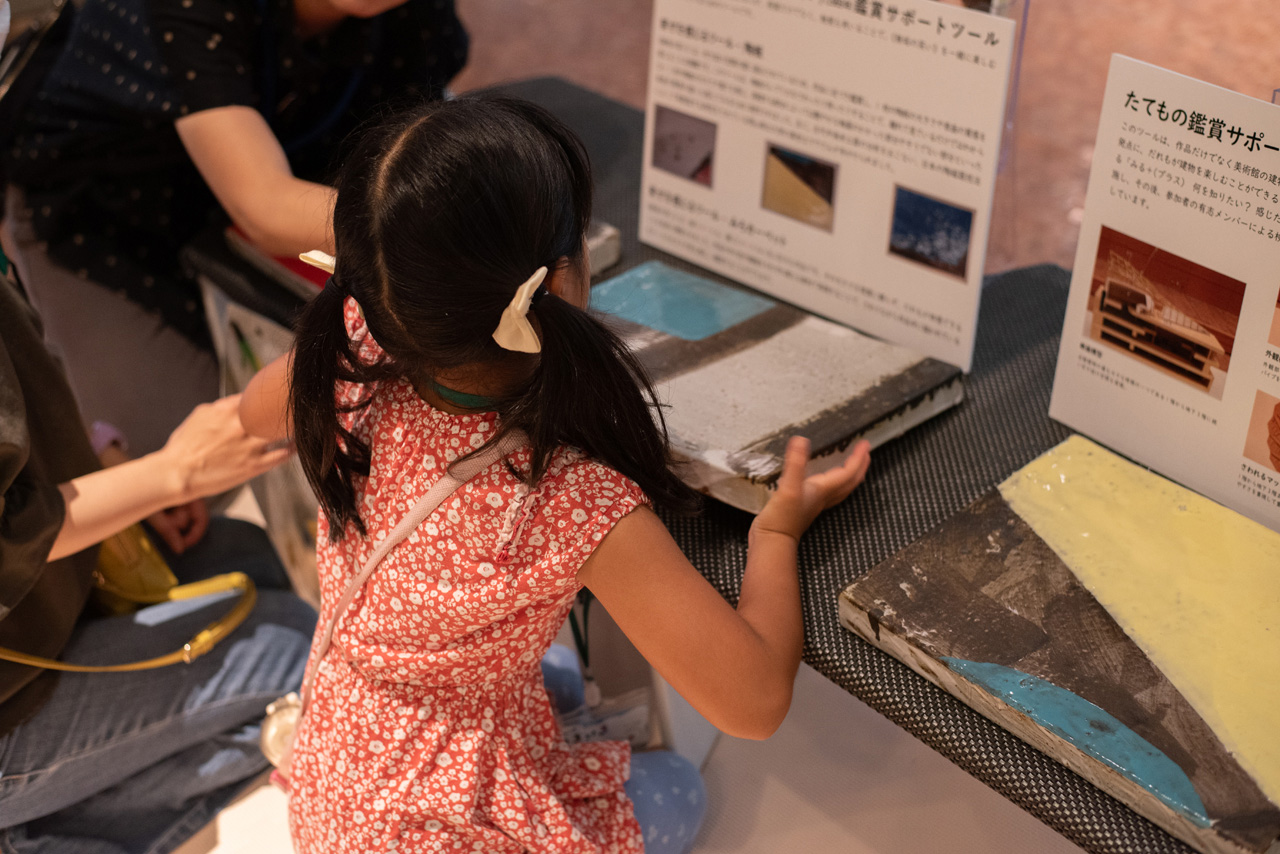
Starting with Observation
“As visitors work on the coloring and puzzle activities, they naturally spend time looking closely at the artwork. Instead of thinking about ‘art appreciation,’ we want them to start by simply observing. It’s wonderful when families talking with each other while they enjoy the artwork,” explains Ms. Fujiyoshi, Senior Researcher at the National Museum of Art, Osaka.
Innocent Laughter by Joan Miró was originally created for the Gas Pavilion at the 1970 Japan World Exposition. Since the museum’s opening in 1977, it has been a beloved part of the permanent collection.
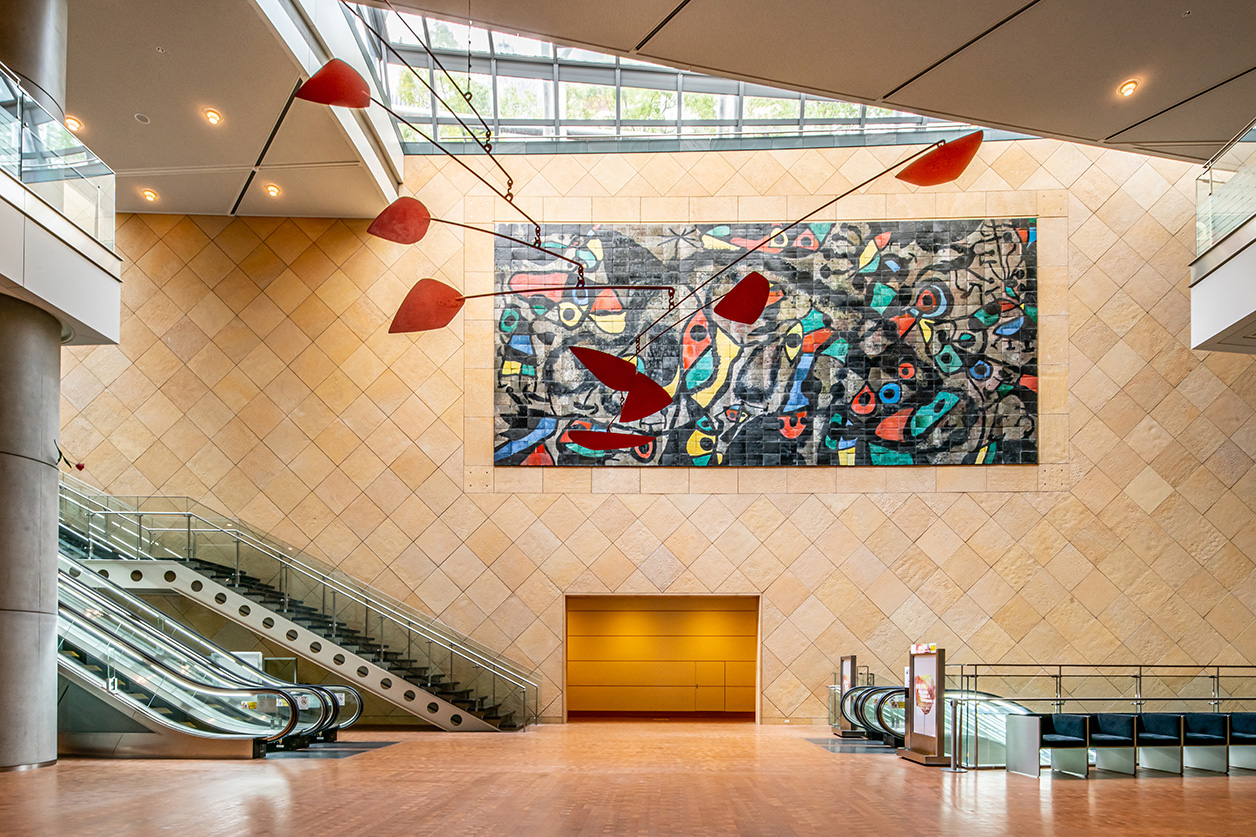
While the artwork has become a familiar part of the museum that visitors can see any time, this familiarity sometimes means people don’t take the time to stop and look at the art carefully.
This program was designed to help visitors discover new aspects of the artwork while learning observation skills they could use with other artworks too.
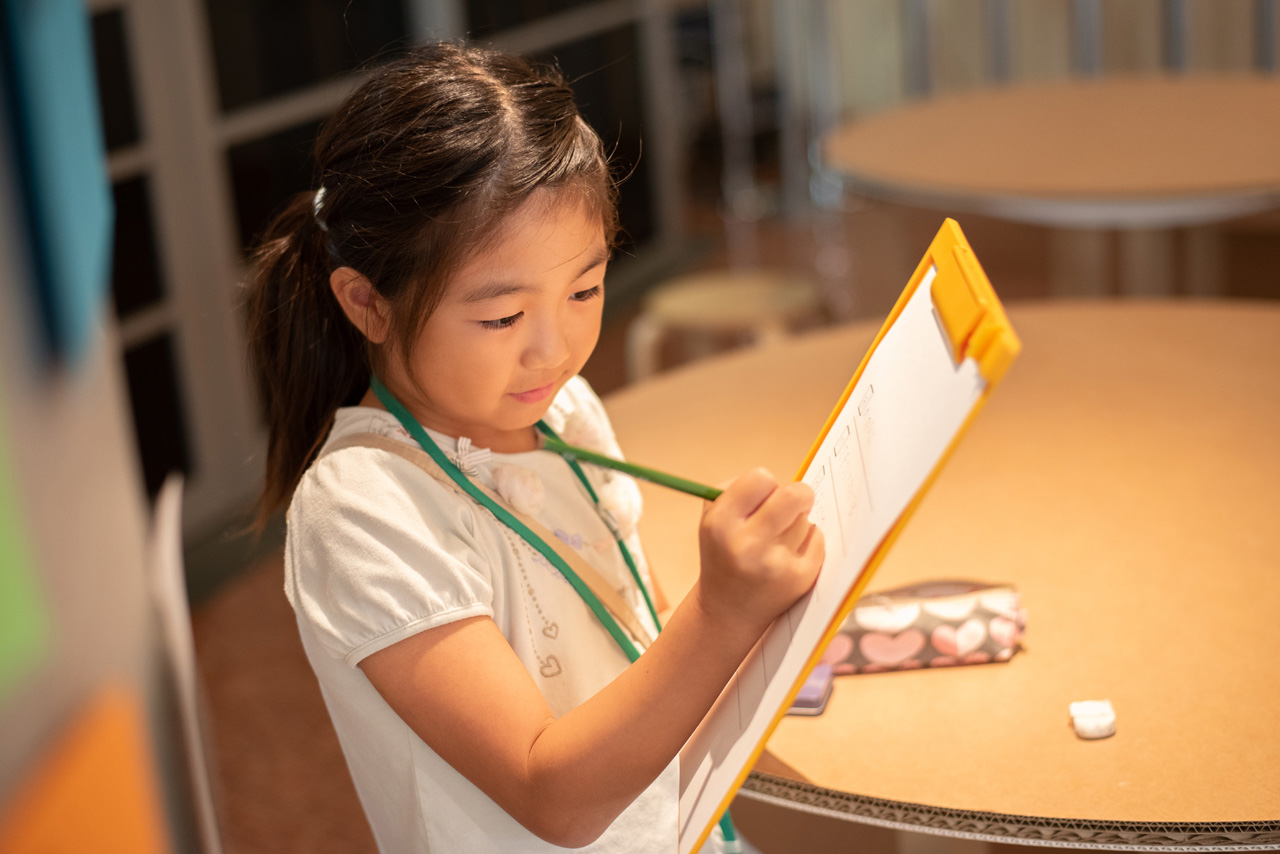
When looking at the artwork carefully, visitors notice many eye-shaped patterns in the design. This inspired the Whose Eyes Are These? activity, where participants imagined these shapes as creatures’ eyes and drew their own pictures.
Using colored paper of their choice, children created all kinds of animals with almond-shaped eyes, round eyes, profile views with one eye, and front-facing creatures with two eyes.
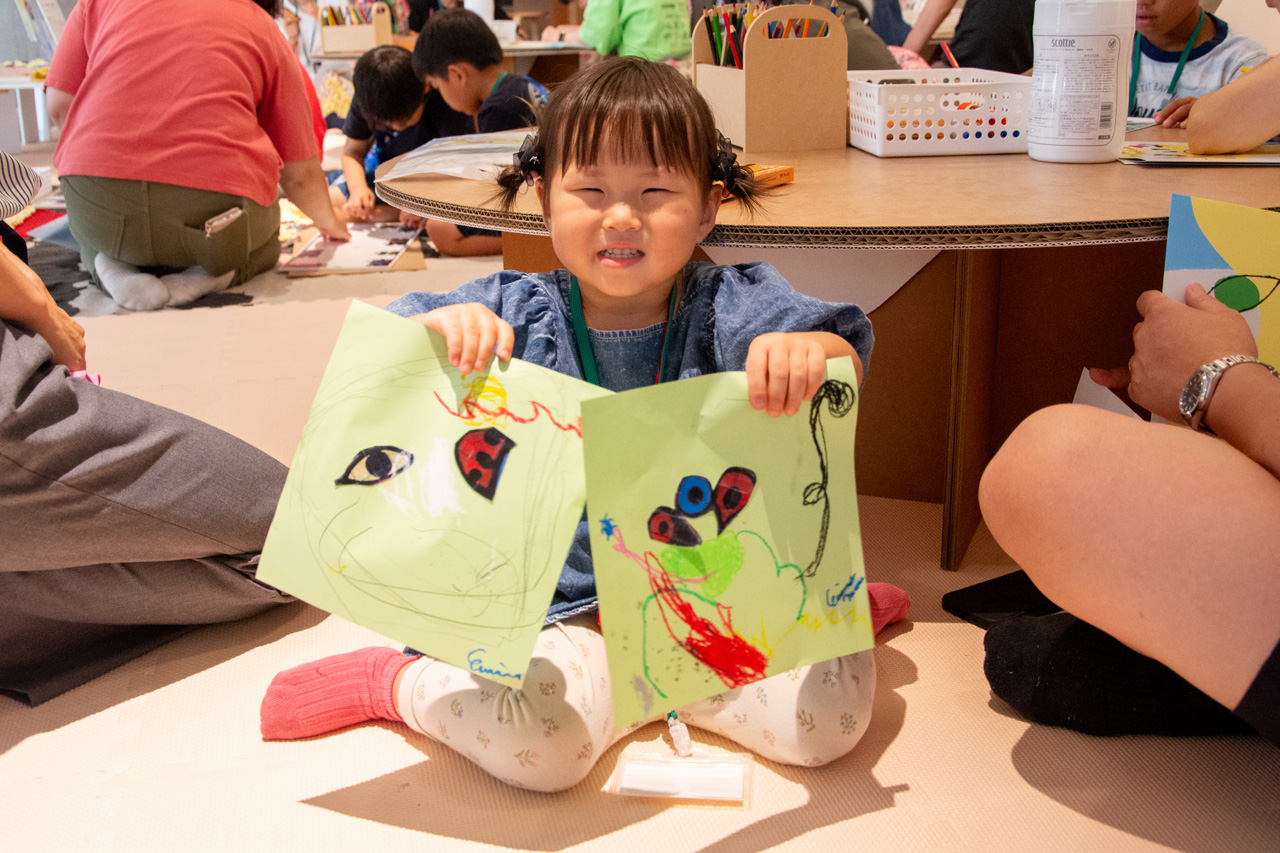
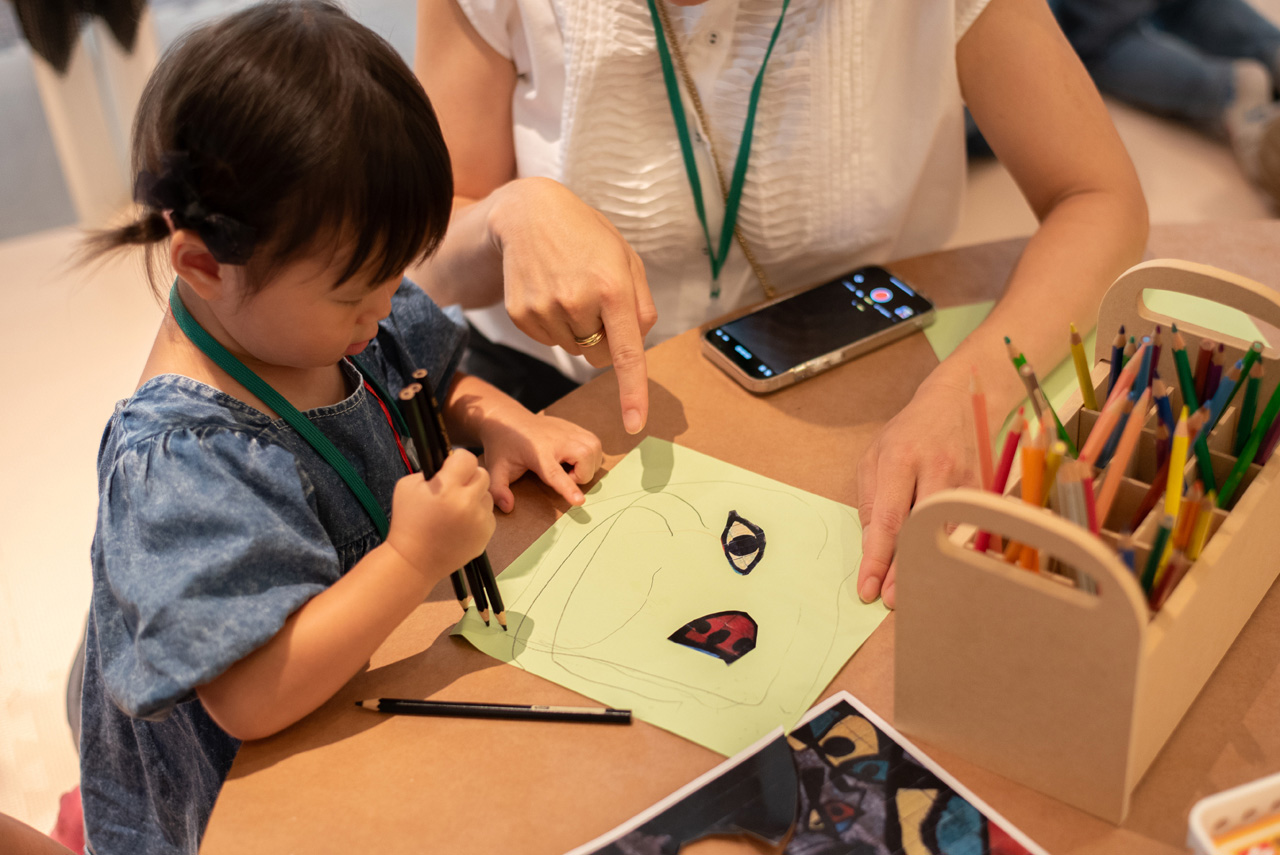
As children tried one activity after another, they were motivated by special stickers they could collect at the reception desk after completing each one.
Along with the stickers, children received information cards that explained different aspects of the artwork—its colors, shapes, and the artist’s ideas—related to the activity they completed. Families could read these cards together later to better understand the artwork.
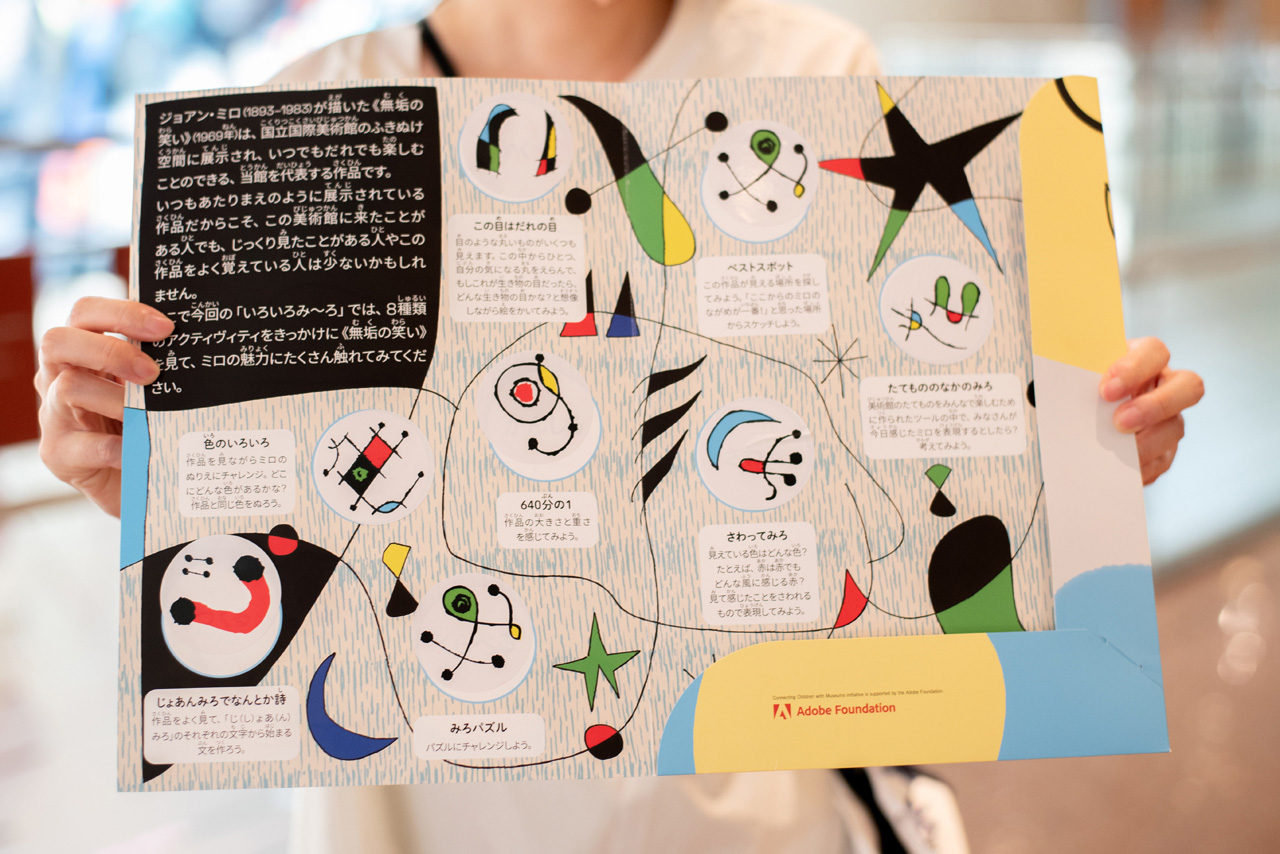
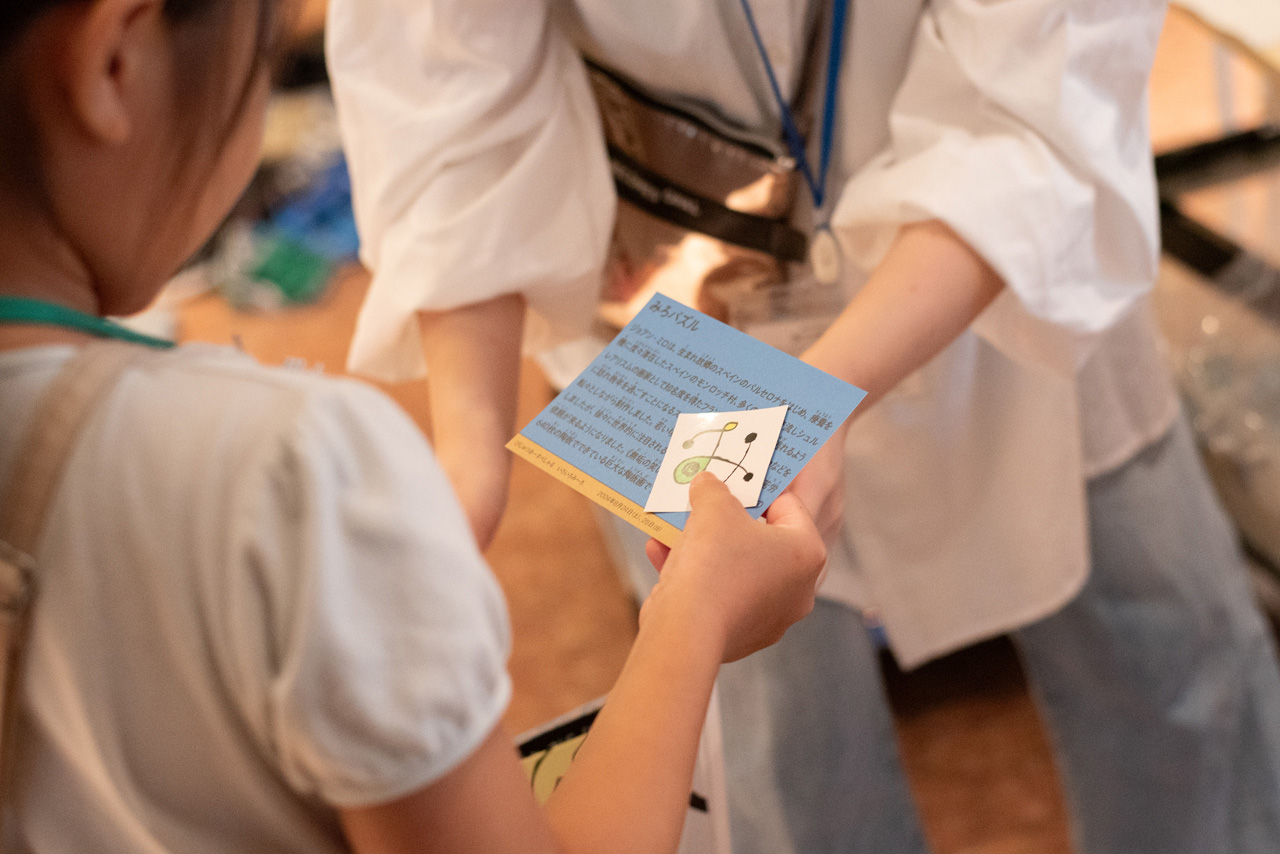
Using Your Eyes, Hands, Feet, and Words
Some activities went beyond colors and shapes to explore the artwork through words.
In the Joan Miró Poetry activity, visitors looked at the artwork and created poems using words that started with each letter in “Jo-a-n Mi-ro.” They could use any word they liked for the “n” sound.
For example, they might put colors used in the artwork, like “aka” (red) or “ao” (blue), in the “a” section. Families brainstormed together—“What could we put for ‘ro’?”—suggestions included “rosoku” (candle) or “romantic.” Some children even found animal shapes and movements in the abstract forms, inspired by the sounds of words.
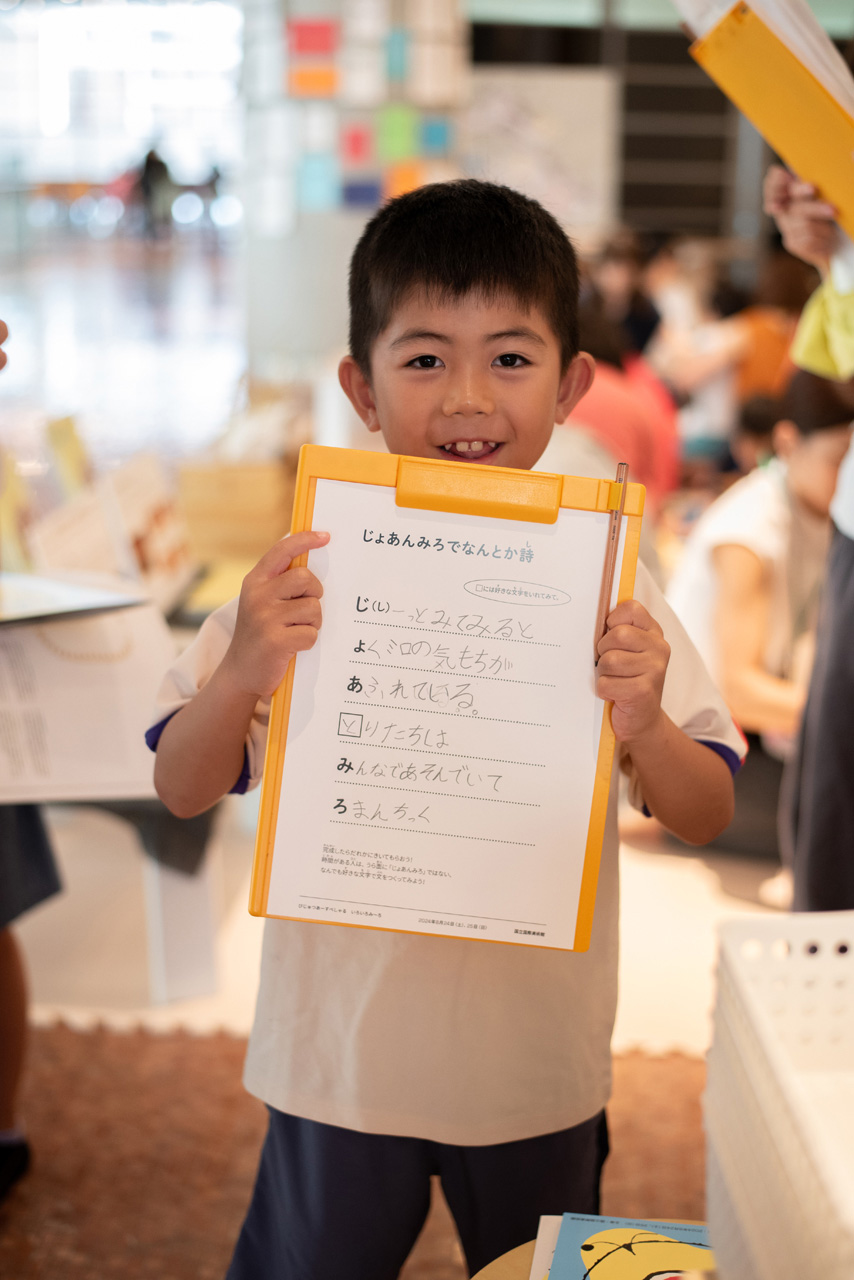
Innocent Laughter can be viewed from many places in the museum. In the Best Spot activity, visitors walked around freely to find their favorite viewing points and shared them with others. These discoveries were marked with stickers and sticky notes on a museum map displayed in one corner of the activity area.
People chose their spots for different reasons—some preferred viewing the artwork head-on or up close, while others liked how natural light from the windows changed the way the colors looked.
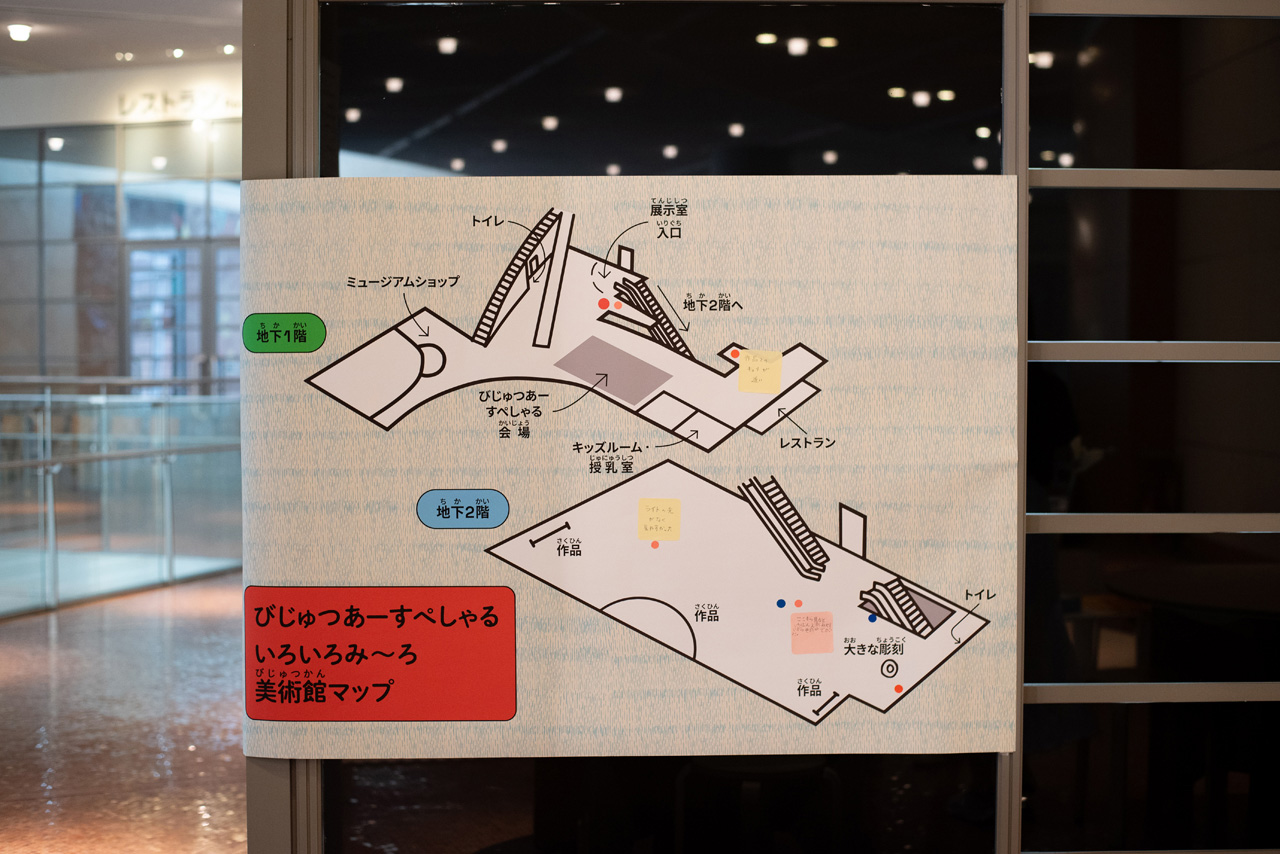
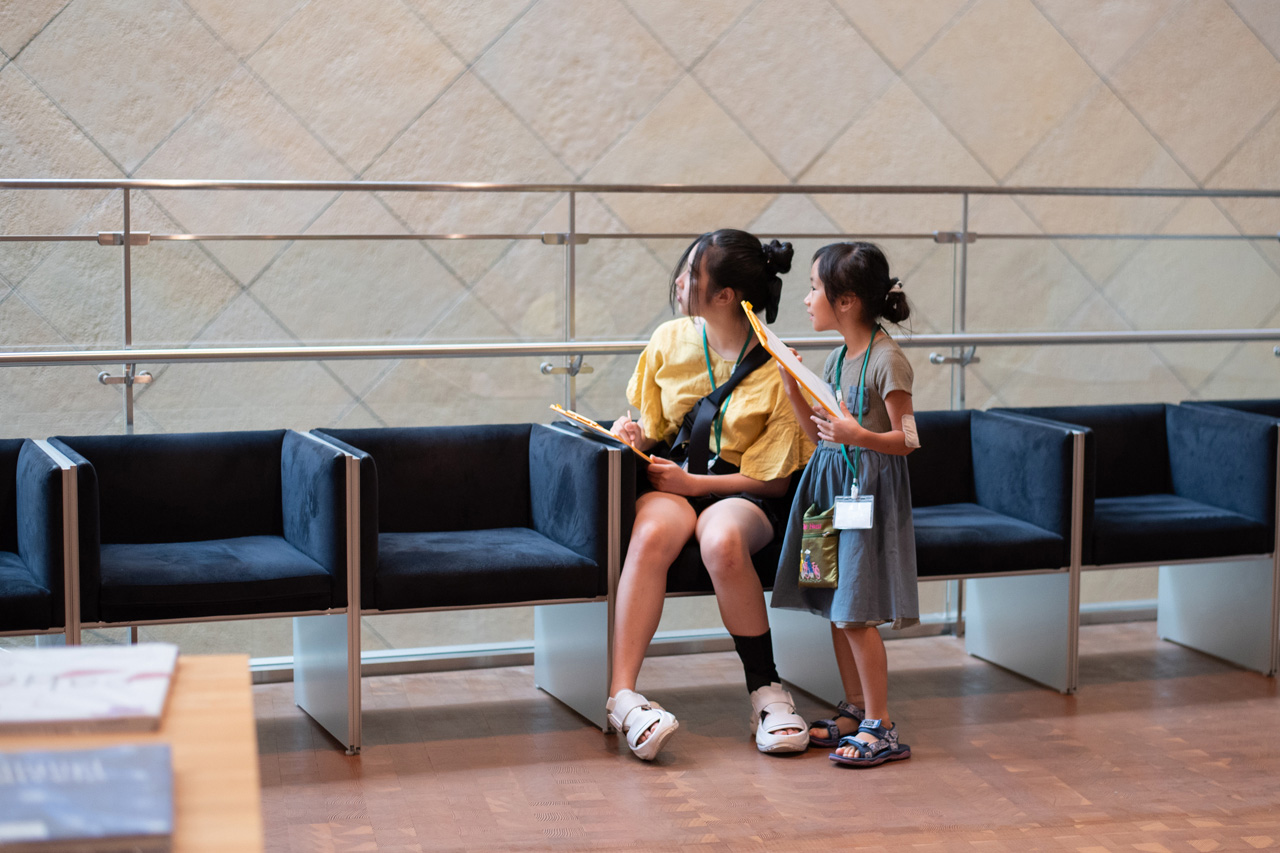
In the Miró in the Building activity, visitors used a model of the museum building. After looking carefully at the artwork, they could suggest what features might be added to show where the artwork fits within the building’s space.
The model was designed to be touched and explored by everyone, including visitors with visual impairments. Participants used their fingers to understand the building’s structure while imagining how the artwork relates to the space.
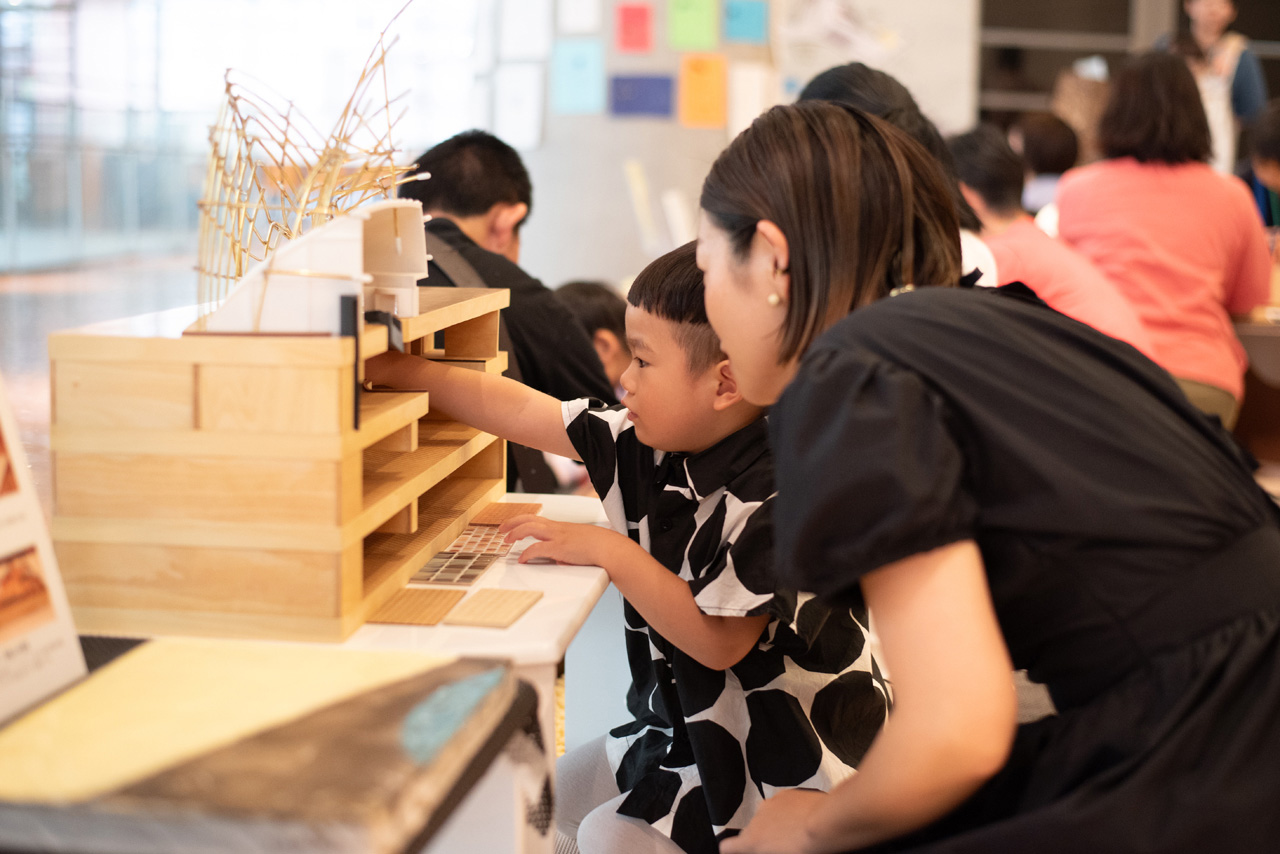
The National Museum of Art, Osaka regularly offers workshops that engage senses beyond sight. For this program, along with the building model, they provided special tools that translated the artwork’s colors into different textures.
In the Touch and Feel activity, visitors used these tools to experience the artwork’s colors through different sensory impressions.
First, they imagined specific things the colors reminded them of. Then, they described these color impressions using words about texture and feeling, expanding their creative thinking.
This approach of translating visual information like colors and shapes into other sensory experiences helps make art more accessible to everyone, including visitors with visual impairments.
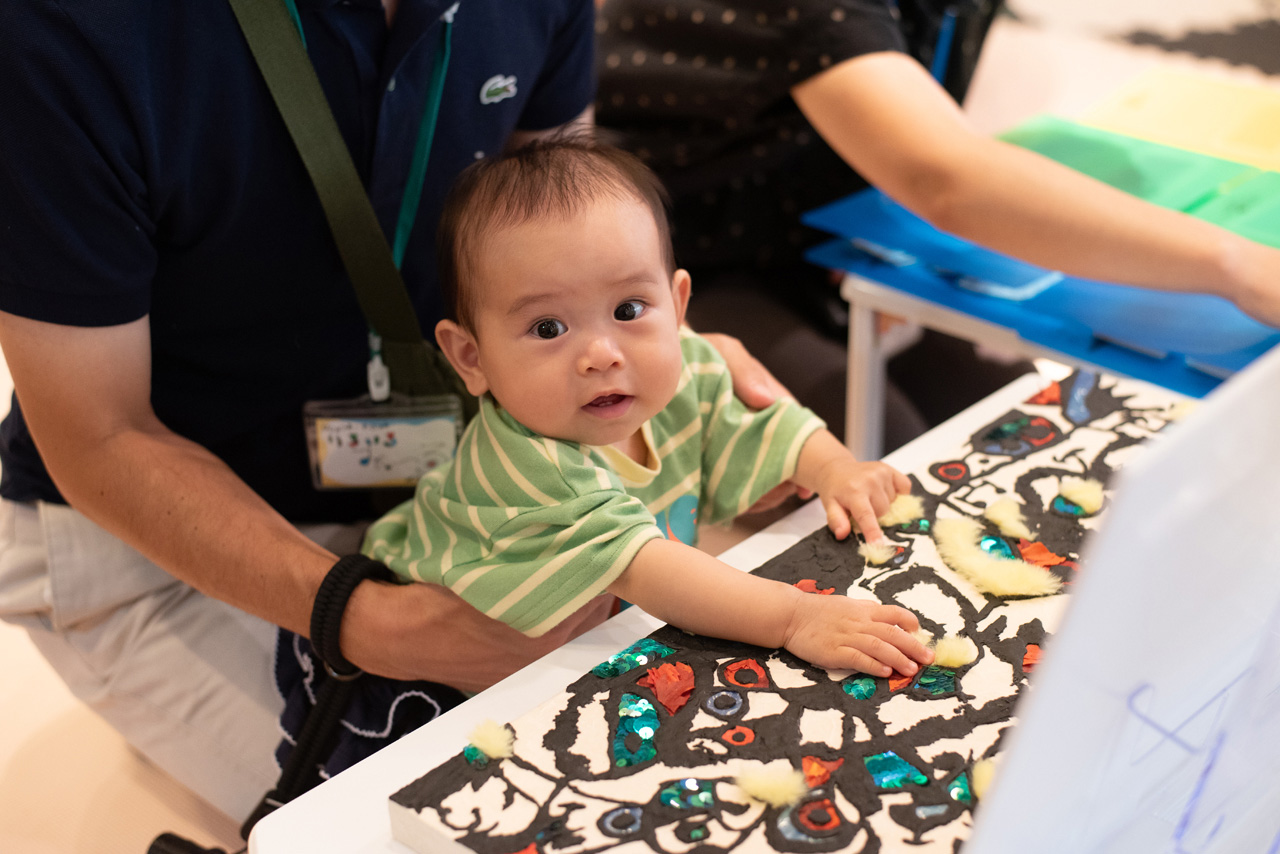
Visiting the Museum with Children
The Art Tour Series Special event welcomed even babies around one year old, who reached out with curiosity to touch the models, tools, and the Miró Carpet laid out in the activity area while their siblings participated in activities.
Made from textiles with different textures, this carpet was designed to help visitors, including those with visual impairments, experience the size and motifs of Innocent Laughter through touch rather than sight.
The museum offers many such ways to engage children’s senses.
August 25 was also NMAO Family☆Day! and throughout the exhibition spaces, children explored the artworks together with their parents.
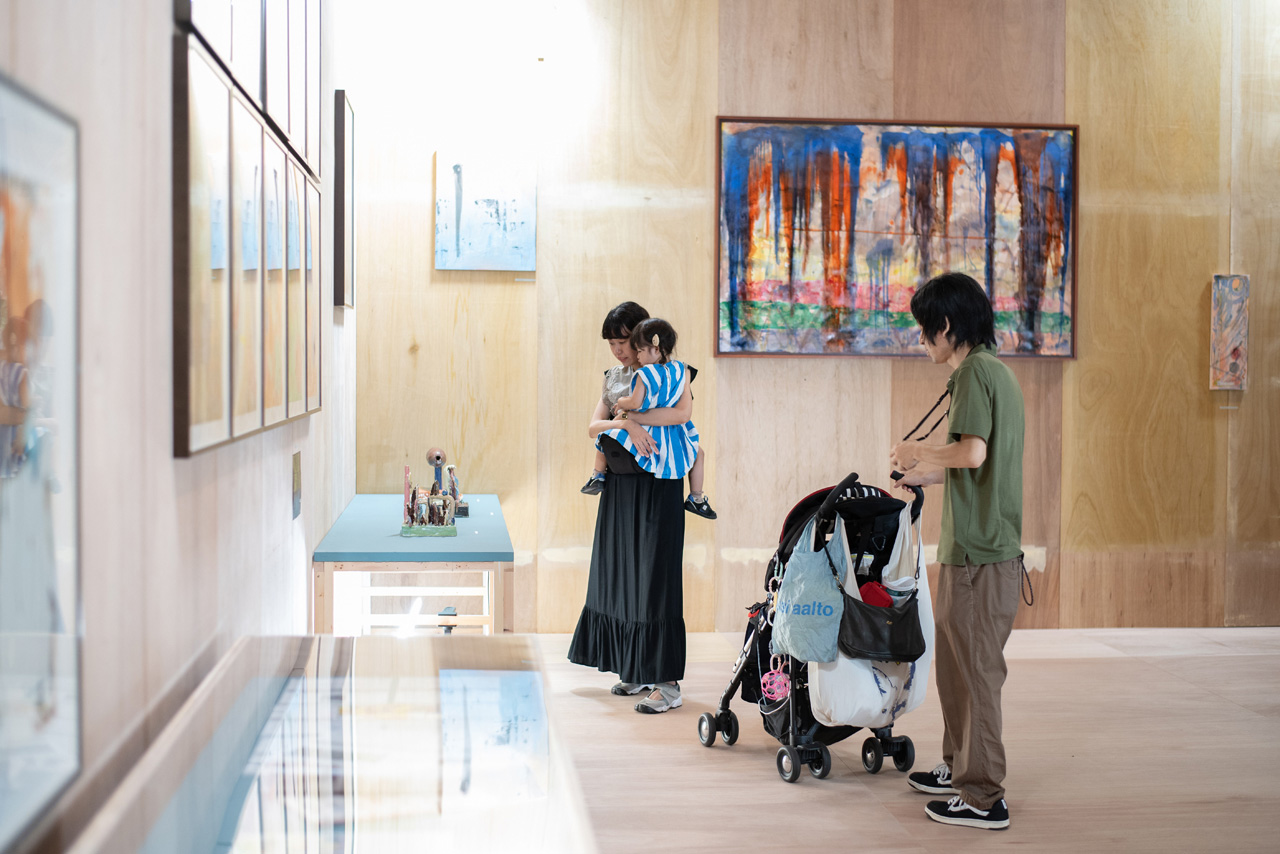
While the museum has always welcomed children, with facilities like nursing rooms and kids’ spaces, the regular exhibition areas are usually quiet and filled mostly with adults. Many parents worry about their children moving around or being noisy.
That’s why special events like Family Day, when many children of similar ages visit together, help parents feel more at ease. Being able to relax is especially important for children visiting a museum for the first time.
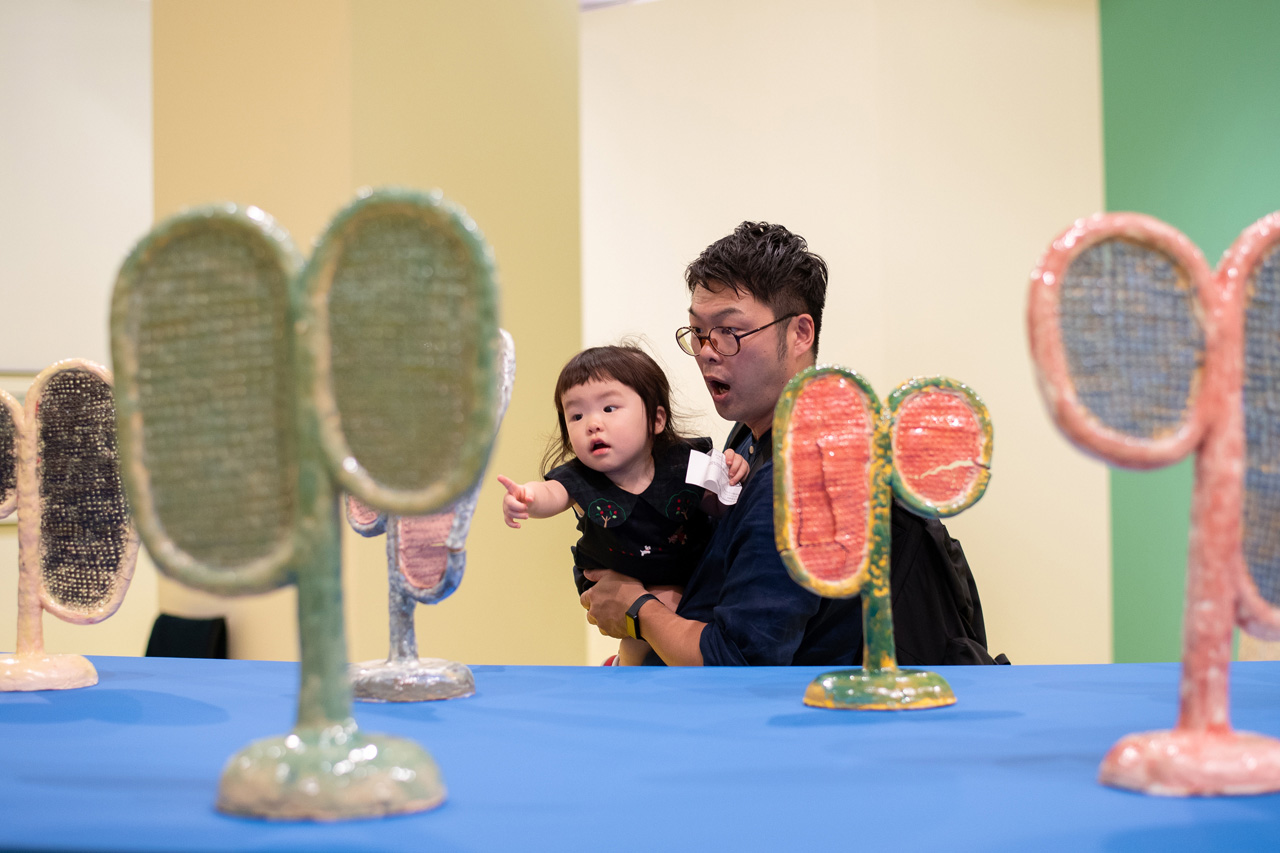
Children in the galleries express themselves freely—pointing at artworks with excitement or turning away from ones that don’t interest them. Watching their honest reactions to what they like or don’t like offers a refreshingly different perspective from adult conversations about art.
Sharing time with people who experience art differently—whether because of age, physical characteristics, or personal perspectives—can open up new worlds for everyone involved.
Date of interview: August 25, 2024
Editing: Yukako Takahashi
Photo: haruharehinata
